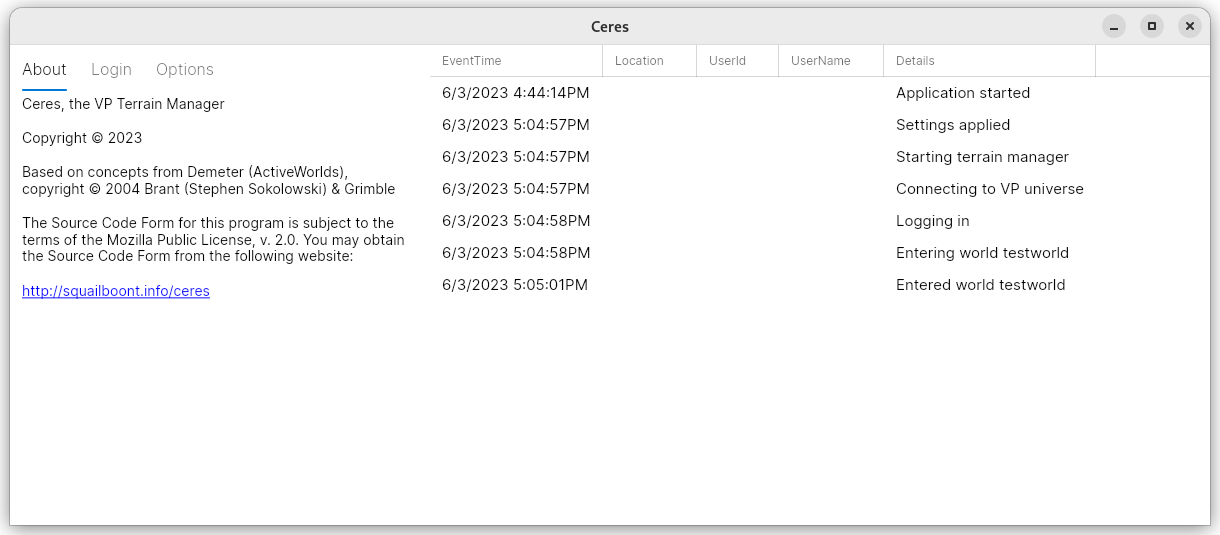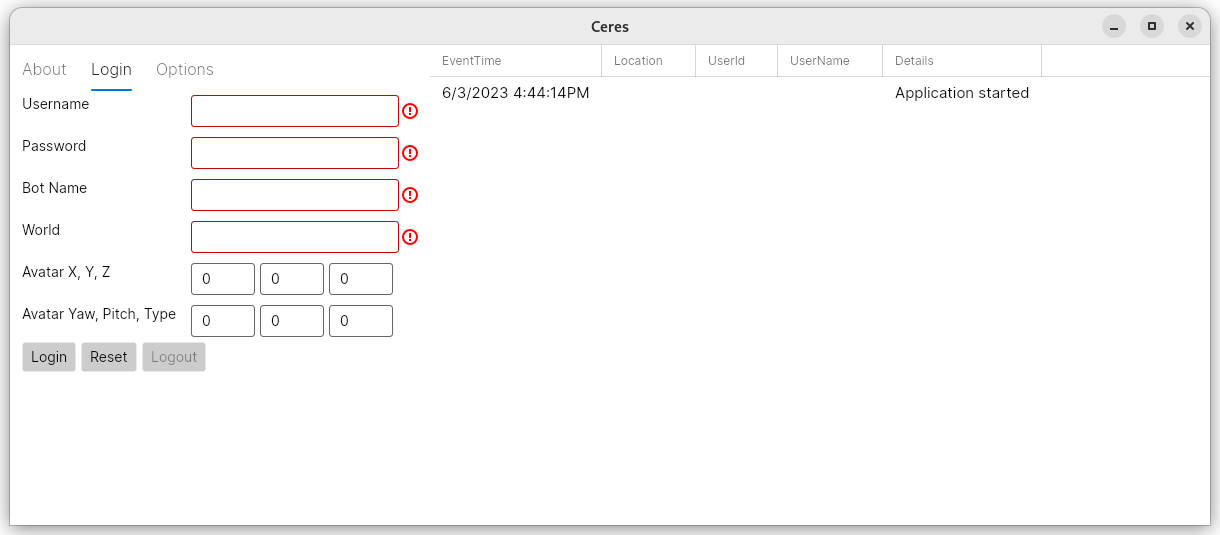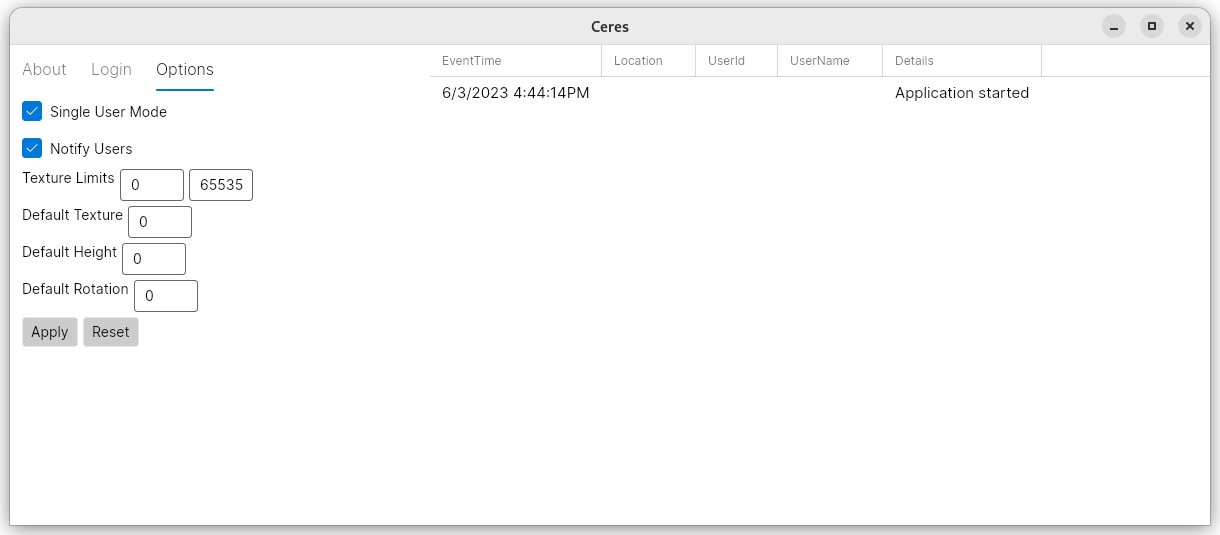Setting Up Ceres
This page applies to the desktop version of Ceres for Linux and Windows. To set up Ceres as a Linux systemd service, follow the systemd instructions
After downloading Ceres for your platform (Linux or Windows) the application can be started by using either the Ceres.exe file (Windows), or the Ceres (Linux) file.
The Program Screen

The program screen has three tabbed areas on the left, and an event log on the right displaying events as they occur.
Program Files
- cells.dat
- Cache of queried property cells.
- log.dat
- Log file containing all events logged during operation of Ceres.
- markers.dat
- Cache of terrain markers.
- terrain.dat
- Cache of world terrain data.
Login Tab

- Username
- The name of the VP account that will host Ceres.
- Password
- The password of the VP account that will host Ceres.
- Bot Name
- Avatar name for Ceres to use.
- World Name
- Name of the world where Ceres will operate. World names are case sensitive, enter them exactly as they are seen in the VP world list (e.g., testworld and not TestWorld).
- Avatar X, Y, Z
- Coordinates specifying where the Ceres avatar will appear.
- Avatar Yaw, Pitch
- Controls the orientation & tilt of the Ceres avatar.
- Avatar Type
- Specifies the avatar model that Ceres will appear as.
- Login
- Start the Ceres instance. All settings that have been changed (including the "Options" tab) will be saved.
- Reset
- Undo any changes made to the login information above.
- Logout
- Shutdown an active Ceres instance.
Options Tab

- Single User Mode
- Set this option if you do not have "eminent domain" permissions in the world where you're running Ceres, especially if you are running in the "Blizzard" world.
- Notify Users
- Set this option to notify users of Ceres when they enter the world.
- Texture Limits
- Set the minimum & maximum allowed texture values. (currently not implemented)
- Default Texture
- The default texture used when clearing terrain.
- Default Height
- The default height used when clearing terrain.
- Default Rotation
- The default texture rotation used when clearing terrain.



